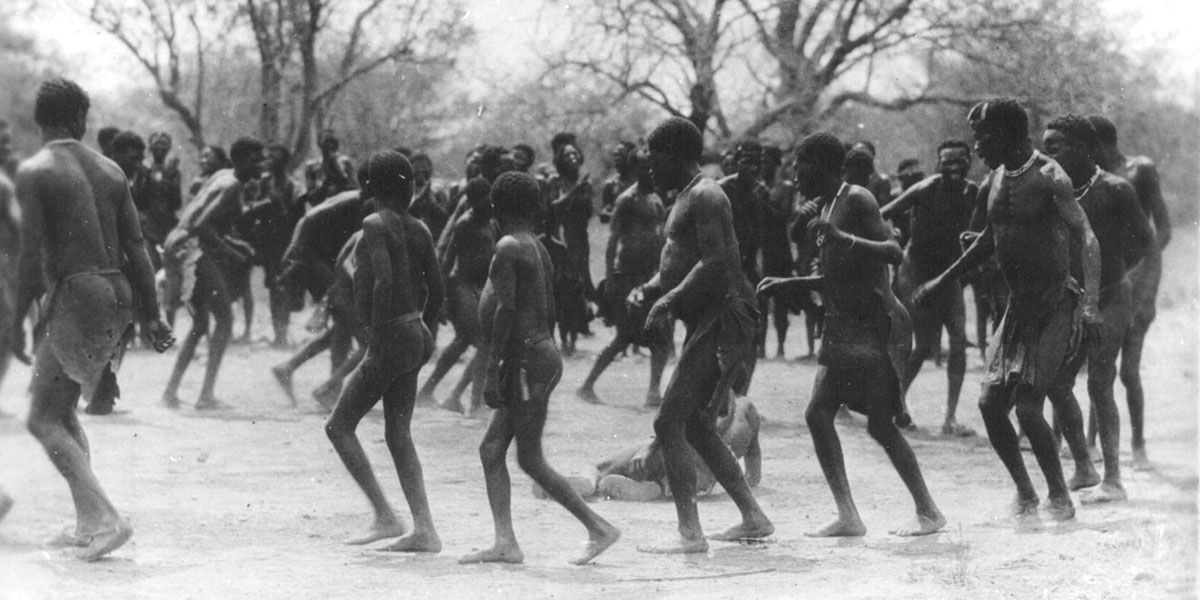Language and Orthography
The language which the Hai||om speak (also referred to as Hai||om) is a Central Khoesan language; as a member of the Khoekhoegowab dialect continuum, it is more closely related to Nama and Damara than to most of the other “Bushman” languages, most of which are classified as Northern or Southern Khoesan languages.
The orthography in this booklet follows the official Khoekhoe orthography, used in A Khoekhoegowab Dictionary (Haacke, W. and E. Eiseb 2002.) Hai||om, like other Khoesan languages, has clicks, which are consonants.
"Bushman's Dance" Photo: National Archives of Namibia
The four clicks in Hai||om
The four clicks in Hai||om are represented in the following way:
- | represents the dental click, resembling the fricative sound of slight disapproval common in many languages;
- || represents the lateral click, resembling the sound sometimes likened to the command given to make a horse move, and previously often rendered as “k” by speakers of non-Khoesan languages (as in “Haikom”, rather than “Hai||om”);
- ! represents the alveolar click, resembling the sound of a bottle being uncorked; and
- ‡ represents the palatal click, resembling the sound of clapping.
Each of these basic clicks may be accompanied by one of the following modifications: nasalisation (!n); aspiration (!h); velar fricative (!kh); and glottal stop (unmarked: |, ||, ! or ‡). The unmodified, voiceless release of a click is represented as !g, |g, ||g, ‡g.
The letter x represents a velar fricative, as in the Scottish or German “loch”.
Hai||om makes no distinction between voiced and voiceless plosive consonants: p and b designate the same phoneme, as do d and t, and k and g. They are all voiceless.
Hai||om is a tone language (i.e. word tone directly affects meaning, independently of intonation for emphasis) employing four tones. For practical reasons, the tones and long vowels are not marked in this publication.
The vowels A, I, O, U may be nasalised, represented with the sign ˆ: â, î, ô, û.
For more information, see http:||www.mpi.nl/DOBES/projects/akhoe

